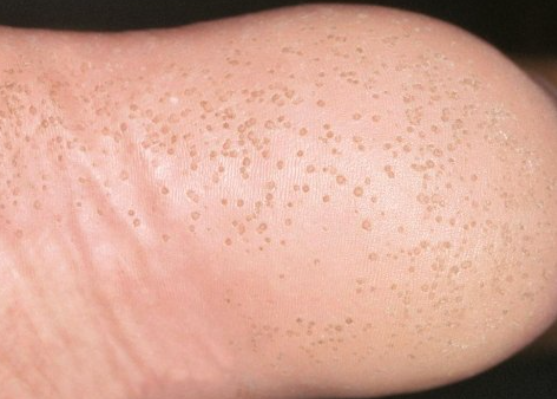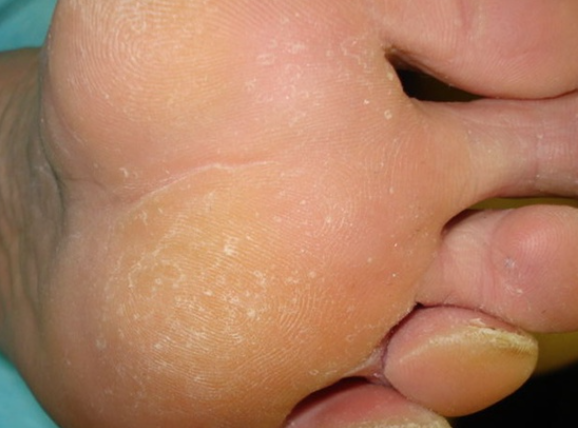Pitted keratolysis is a non-inflammatory bacterial infection of the soles and, less commonly, the palms. ICD-10 code L08.8.
It affects young people, mostly males, and is common in both temperate and tropical climates. Risk factors include hyperhidrosis, tight-fitting shoes, high temperature, humidity, and elevated skin surface pH.The primary cause of this condition is the infection of the skin, primarily by the bacteria Kytococcus sedentarius (formerly Micrococcus sedentarius), but other bacteria such as Dermatophilus congolensis, Corynebacterium, and Actinomyces spp. can also be involved. K. sedentarius produces two types of keratinase enzymes (K1 and K2), which affect the keratin in the skin's stratum corneum. Sulfur-containing compounds released by the bacteria lead to the characteristic and associated unpleasant odor.
The disease is characterized by the appearance of numerous sharply outlined round depressions in the skin, ranging in diameter from 1 to 8 mm (usually 2-6 mm), and small crater-like grooves that, when merging, form "eaten away" patches with intricate outlines (up to 30 mm or more) in areas of the highest pressure on the soles, primarily on the heels, interdigital spaces, and areas in contact with footwear.
The affected areas turn white when moist. The condition is usually symmetrical, sometimes unilateral. In extremely rare cases, the palms may be affected. Subjective sensation is usually absent, or there may be mild pruritus and moderate tenderness to palpation. The condition persists or recurs until the provoking factors are eliminated.- Tinea pedis (Athlete's foot)
- Candidiasis
- Erythrasma
- Intertrigo caused by Pseudomonas aeruginosa
- Dyshidrotic eczema
- Keratoderma
- 2% erythromycin or 1% clindamycin solution or cream twice daily for 2 weeks
- Mupirocin ointment twice daily for 2-4 weeks
- In severe cases, oral erythromycin 250 mg four times a day for 7-10 days
- To treat hyperhidrosis, treatment of the feet with a 20% aluminum chloride solution.


